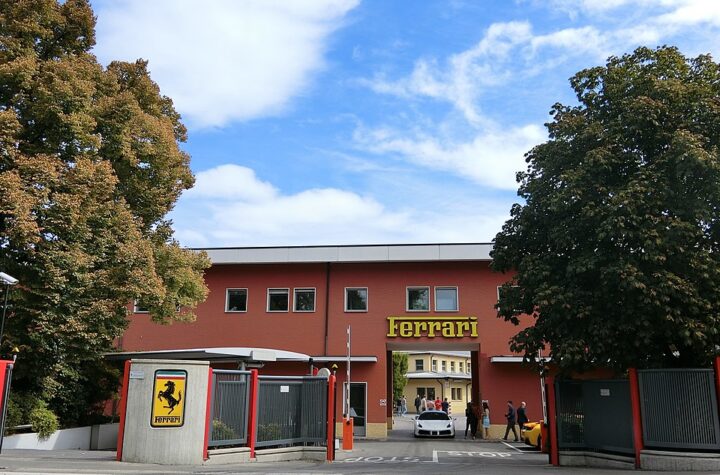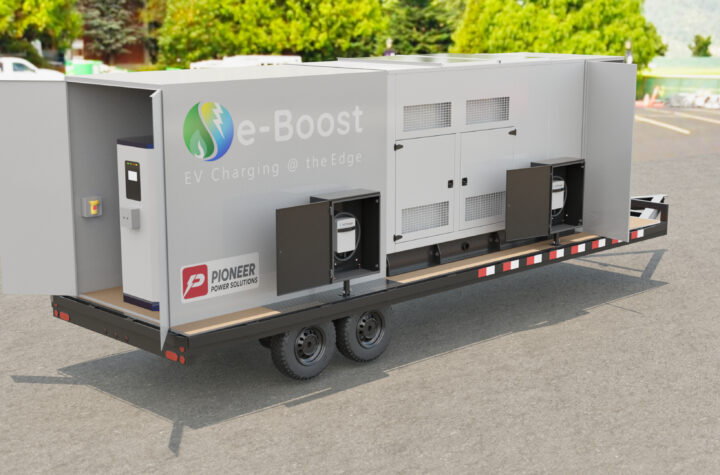
Whether bold and daring or creatively conservative — interior color is making a comeback.
Just about every product segment in the consumer market has embraced customization with a vengeance. Gone are the days of industrial beige computers. Apple iMacs sprout in new colors as fast as dandelions in the spring. Black and gray cell phones? Forget about it. You can get them in quirky colors or an array of anodized metals all day long.
So, how has the automotive sector fared in this worldwide explosion of consumer product color? Well, let’s put it this way: How many different ways can you say beige, black and gray?
The Color Culprits
 |
| Sporty, interesting tri-color interiors, such as the Pontiac Solstice’s combination of beige, blue and gray are a glimpse of one of the many future interior trends. |
“If you go back to the really old days of General Motors, you’ll find that the Cadillac was offered in eleven different interior colors,” says Chris Webb, color and trim designer for General Motors (GM). “Over the years, when cost pressures increased, we cut that down to three to five. When you start saying, ‘This vehicle will have a red interior and this will have blue inserts,’ those parts have to be produced, tagged and stored. Before you know it, you have all your development costs used up on a very few parts.”
Time is another factor. “It takes a good 12 to 18 months to develop a fabric that meets the OEM’s tests such as abrasion, fading and fogging,” says Lear’s manager of the color and trim department, Lisa Tucci. “A lot of money goes into that type of thing, and it’s hard for them to take the chance on a variety of new fabric colors each year.”
Still, cost and time aren’t the only culprits. For many years, neutral interior colors were just a given. OEMs say shades of gray and beige are the most acceptable among the broadest audiences, and you don’t offend anyone when you stay in those color ranges. “Whenever we talked to people about interiors, there’s just a general feeling of ‘blah,’” says Webb. “Everyone’s really tired of beige and gray, but in the past we always did what we’ve always done.”
 |
| GST AutoLeather’s new, custom color-shifting leather is featured on the new Ford Mustang. Mystichrome leather utilizes light interference pigments to mimic the color-changing patterns of the car’s exterior paint. Color doesn’t have to be painted on or dyed in. |
“The OEMs have played it safe up to this point,” agrees Nicole Fonseca, creative designer for Seton Leather Co., “but that’s changing. OEMs are starting to ask more and more about what we can do in color. They are looking to try some new things.”
As DaimlerChrysler’s director of color and trim design, Margaret Hackstedde, tactfully puts it: “It’s not so much that something was not being done well before. It’s more that as we design new products, the market evolves, things change and we need to take a different approach.”
So what’s changed? What’s scaring the OEMs out of their color closet?
The consumer, primarily. The auto industry recognizes that power has shifted from the producer and salesman to the consumer. The Internet has increased the possibilities of choice tenfold, and consumers are growing more educated on good design and quality materials.
Other product segments continue to court consumers by offering personal choices. Like it or not, mass customization is coming into focus on the automotive industry’s horizon.
“Today’s consumer definitely wants something tailored to their individual likes, products that fit their personalities,” says Vince Brooks, manager of industrial design for Delphi Corporation. “The discovery of the fact that Generations X and Y (buyers in their late 20s and early 30s) modify their cars heavily is what led to successful brands like the Toyota Scion.” “Customers are more design savvy,” agrees GM’s Webb. “Colors and textures are taking center stage in a variety of other fields, so auto designers understand that it’s heading our way, too.”
Opinion on just how far the industry can go down the mass customization path is varied. “Custom-order interiors sound desirable, but it’s a difficult thing to get to,” says DaimlerChrysler’s Hackstedde. “It’s a complicated process to bring a vehicle to market. The answer may be a lot of small-run, specialty packages that offer unique exterior-interior color combinations. Trying to totally individualize things would be incredibly challenging.” One of the biggest challenges, she says, would be in quality. “Total customization adds complexity, and complexity creates quality issues. You have to balance what’s on the consumer’s wish-list with their desire for a highquality vehicle. The real question is how much customization is enough?”
Audi says it is embracing the customization trend. “We want to increase the share of our vehicles that are custom ordered,” says Norbert Seitner, head of product management for Audi. “We’d like to offer a bigger variety of items in the U.S. to those who are willing to custom order and don’t mind waiting two to three months for individualized vehicles. It doesn’t cost any extra to order in advance, and we’d like the opportunity to show our customers what we are capable of. But we’d have to make sure the demand for that service is here like it is in Europe.”
 |
| The Nissan Actic’s designers, influenced by a trip in an Airstream motor home, created polished metal interior panels that reflect the color of the seats. |
Sabbagh says one way interiors can be transformed is with high performance materials. “People are afraid to make a long-term commitment to bright colors,” she says. “An auto interior isn’t like painting over a wall when you grow tired of the color — the color in the car is there for its lifespan. But modularity and performance materials bring new possibilities.”
As an example, she says, materials can have one color on one side and a different color on the other. It could be as simple as floor mats that have carpeting on one side and rubber on the other, offering two different colors, looks and performances. The concept could also be applied to seats, door panels and the cargo area, where panels could be flipped at the consumer’s whim, either at the dealership or by the consumer himself. “We’re really focusing on materials that bring more options into the vehicle,” she says.
To a small extent, the customization effort has already begun. For a pretty penny, companies like Mercedes, BMW and Porsche offer a variety of custom interior choices in vehicles built in Europe. Joining the ranks of these will be the 2005 Audi A8, which will offer exclusive, luxury trim packages that feature more unique color choices and wood trims for roughly an extra $10,000.
Of course, one dynamic that helps is that in Europe, it is common to order vehicles ahead of time rather walking onto a mega-lot at the dealership. “Because most Europeans order their vehicles and are willing to wait three months to get them, customers can choose their own color palette in many cases,” says Anke Mazzei, a Nissan color designer. “In America, it’s a different culture and mentality. But, who’s to say Americans wouldn’t want more ability to advance order and select their interior colors if vehicles were marketed to them that way?”
On this side of the water, one clear move toward customization can be seen in the Cadillac XLR.
“The XLR was a limited build vehicle created from a satellite system within the plant,” says Webb. “The piece cost was worked into the package and that worked for us. It was a question of re-directing how we were doing things. As a result, we were able to reintroduce real color back into the vehicle.
“Down the road, we have a desire to add Cadillac to that group of global luxury vehicles that offer interior customization.”
Nissan, too, has enjoyed recent success with short-run customization. “About 5 percent of the 2003 Quest minivan featured an interior with a red instrument panel and seats with black trim,” says Nissan’s Mazzei. “We were going after the sexy moms who would rather drive a sportscar but needed the functionality of a minivan. We planned from the beginning that we would not produce a big number of these interior packages, and if you plan from the beginning, then you can offer this kind of differentiation.”
“True customization is going to happen,” predicts Bryan Thompson, a designer with Nissan Design America. “It’s just a question of who’s going to do it first.”
Getting Inspired
Inspiration is the muse that breathes life into any new color idea. So, where do automotive color designers go to get their inspiration, and where do they see the industry heading in the near future ?
Interestingly enough, a great many of today’s automotive color designers didn’t start in the auto industry at all; they meandered their way into this industry via careers in apparel, homefurnishings, accessories and architectural design. In fact, automotive color designers say they often get color inspiration from these industries and their trade shows in Milan, Hong Kong and London as well as semi-annual seminars sponsored by the Color Marketing Group (CMG), an Alexandria, Va.- based, not-for-profit association of more than 1,500 color experts representing dozens of international product markets.
Of course, the Internet has proven an invaluable source of trend information for OEMs and suppliers alike. “Web sites and the Internet have brought so much more information to the typical designer,” says JCI’s Sabbagh. “I search the Internet constantly for new trend information, and I subscribe to dozens and dozens of magazines from all over the world, in all markets.”
“Lear uses the Internet quite a bit for trend research,” confirms Lisa Tucci, manager of the color and trim department for Lear Corporation. “One of my favorites is the Worth Global Style Network (www.wgsn.com), which is an online research trend analysis and news service for fashion and style industries. Anytime there is a trends show somewhere in the world, Worth updates its site daily with the new information.”
GM’s Chris Webb’s personal favorite is the Lovemarks Web site (www.lovemarks.com). Lovemarks is a descriptive name coined by Kevin Roberts, chief executive of Saatchi & Saatchi advertising agency, which refers to beloved products that represent the future beyond brands. The idea behind the site is that consumers’ buying decisions are not only based on rational qualities of products, but also on the emotions these “lovemark” products inspire. Those visiting the site can nominate their favorite products for the Lovemarks List. Webb visits the site frequently for insight on what types of products and features are getting into the hearts of consumers.
And sometimes, inspiration comes when you least expect it. “We did a project with Airstream , where we went on a road trip from their factory to ours in one of their round-bodied, aluminum shell trailers,” recalls Nissan’s Thompson. “The experience of being inside that trailer, studying how reflective the colors are inside them, became a real inspiration for us. Consequently, in our new Actic show car, you’ll see we didn’t use an interior color at all.
The interior is polished aluminum and reflects the color of the seats. What we learned from the Airstream experience is that color doesn’t just come in paint. It can come from reflection of materials inside the vehicle.”
Re-Birth of Color
By and large, the auto industry has realized that people are tired of getting into the same old thing. Consequently, newer vehicles offer much more depth in their interior concepts. In general, interiors are growing lighter — in some cases, no more than tinted whites. “Dark interiors can make you feel a little enclosed,” explains DaimlerChrysler’s Hackstedde. “New interior colors will emphasize a light, airy, spacious feeling.”
Also already on the scene are multiple values within the same interior, usually featuring a slightly darker instrument panel to avoid reflection issues, followed by lighter areas and perhaps two-tone seating to add interest. “It’s hard to say where we’re headed in color without being wrong,” says Nissan’s Thompson. “It’s better to say that we’ll definitely be getting away from the colors we’ve seen in recent years past.”
For now, it’s fair to say the industry will pursue customization at the level it can, working within the restrictions of a great many more regulations than most consumer products face. “Advance collaboration between OEMs and suppliers will help improve the feasibility of more interior color offerings,” says GM’s Webb.
“Whether or not we go back to the full color interiors of the older days will be an interesting thing to watch. For sure, the industry is gearing up for more color, and we can expect color to come back in a major way in 2006, 2007 and 2008.”
Perhaps the most interesting thing about the rebirth of color is that it’s not just on highend vehicles where people might expect to pay for customization — it’s across the board demographically. “Whether a person spends $20,000 or $50,000 on a vehicle, they still want to feel like they’re getting a quality interior,” says DaimlerChrysler’s Hackstedde.
“No one says, ‘Well, I only paid $20,000 for this so I know I’m going to get what I paid for.’ No matter what the price point, consumers want to feel great when they get inside their vehicles — they want the interior to feel like a hundred grand.”
Color Palette Points to Fusion of Markets
In the past, textile manufacturers have assumed the bulk of responsibility for analyzing color trends, and DuPont has consistently been at the forefront. This year’s “Fusion” color show, fourth in a series from DuPont and Invista (formerly DuPont Textiles & Interiors), represents the fusion of ideas taking place in various markets that are impacting automotive interior fabric colors. Highlights from the show include four themes:
Light and Shade — changing light effects. European sensibility in dappled greens; soft pale to mid-browns; icy cold blues.
Nature Tech — combines the natural and the technical. Stone and slate combine with coolness of aluminum and steel. Dry and textural combined with the smooth and lustrous. Bringing together contrasting textures.
Graphex — a re-awakening interest in the graphic image and decorative products. Surprising effects created through computer manipulation; heightened colors. Recognizable imagery used to create abstract patterns.
Masque — colors inspired by the Venice carnival; opulence; flamboyant, rich colors partnered with near-black tones. Diverse and eclectic patterns. Textural deep browns. Back-lit aesthetics through translucent parts; ambient mood lighting.














More Stories
Horse Logos In Cars – Car Brands With Equine History
Durable Engine Labels for Harsh Automotive Conditions
How Does Motorcycle Transport Work? Costs, Methods & Companies